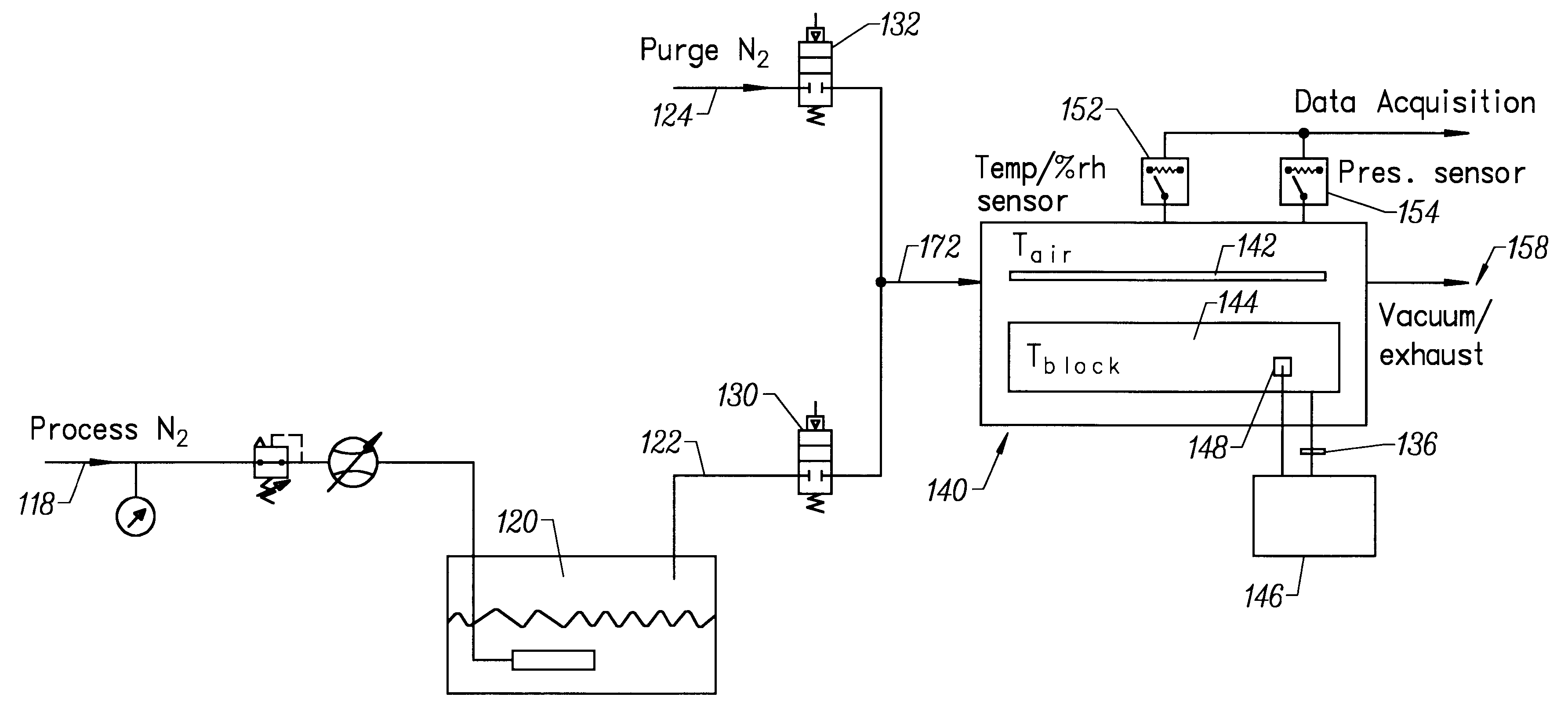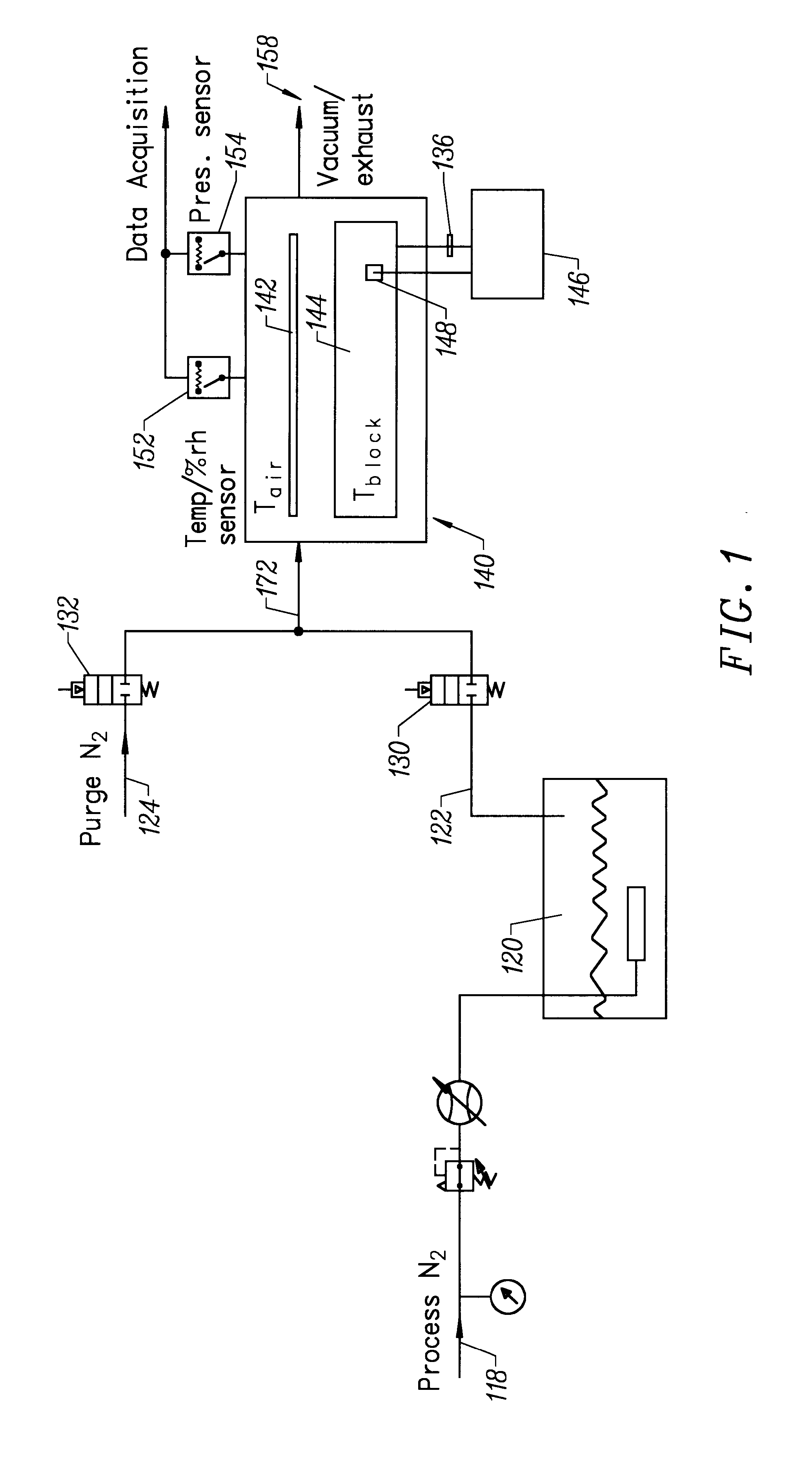Environment exchange control for material on a wafer surface
a technology of environment exchange control and material, applied in the field of microelectronic fabrication, can solve the problems of reducing the moisture content below, obtaining the maximum performance of these sensitive photoresists, and sensitive to the chemical environmen
- Summary
- Abstract
- Description
- Claims
- Application Information
AI Technical Summary
Benefits of technology
Problems solved by technology
Method used
Image
Examples
first embodiment
After forming a DUV resist coat on a wafer, the wafer and the coating may be dehydrated within a wafer processing chamber that is being utilized as a post application bake (PAB)module. This involves controlling an exchange between the polymer coating and a surrounding environment defined by the wafer-processing chamber. Specifically, drawing moisture out of the environment will cause the amount of available water on the surface of the polymer to be reduced as this water exchanges to the environment in an attempt to achieve equilibrium. A gaseous mixture such as N.sub.2 may be introduced into the wafer processing chamber so that the wafer processing chamber dehydrates the DUV resist coat. The wafer may then be exposed in a normal manner by a stepper and / or scanner tool. Since the resist coat material has been dehydrated before entering the exposure part of the process, only a minute amount of deprotection will take place, during the exposure. As such, the outgas during exposure is mi...
second embodiment
In second embodiment, an ACETAL DUV coated wafer is treated in an environmentally controlled chamber forming a bake unit during a post application sub-step. The chamber regulates a known amount of solvent, moisture or chemical(s) for the purpose of treating the wafer in a controlled fashion. In this embodiment the controlled exchange with the surface of the polymer is limited to the time during which the wafer is located in the environment defined by the PAB unit. Under these conditions, the final performance of the ACETAL resist may be enhanced. In comparison with the prior without any change of resist chemistry or exposure tool.
third embodiment
In a third embodiment the wafer is treated once after the wafer is exposed. More specifically, after the DUV coated wafer is photolithographically exposed in the stepper, the wafer is transferred to an environmentally controlled chamber forming a PEB unit. In the chamber, a known amount of solvent, moisture or chemical is regulated to treat the wafer in a controlled fashion. In this embodiment, the controlled exchange between the environment and the polymer is limited to the time in which the wafer is located in the PEB unit. Under these conditions, the final performance of the ACETAL resist may be enhanced in comparison to the prior art without any change of resist chemistry or exposure tool.
PUM
| Property | Measurement | Unit |
|---|---|---|
| dielectric constant | aaaaa | aaaaa |
| dielectric constant | aaaaa | aaaaa |
| dielectric constant | aaaaa | aaaaa |
Abstract
Description
Claims
Application Information
 Login to View More
Login to View More - R&D
- Intellectual Property
- Life Sciences
- Materials
- Tech Scout
- Unparalleled Data Quality
- Higher Quality Content
- 60% Fewer Hallucinations
Browse by: Latest US Patents, China's latest patents, Technical Efficacy Thesaurus, Application Domain, Technology Topic, Popular Technical Reports.
© 2025 PatSnap. All rights reserved.Legal|Privacy policy|Modern Slavery Act Transparency Statement|Sitemap|About US| Contact US: help@patsnap.com



